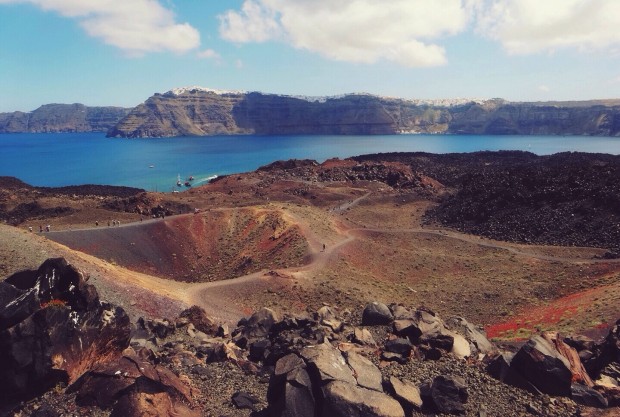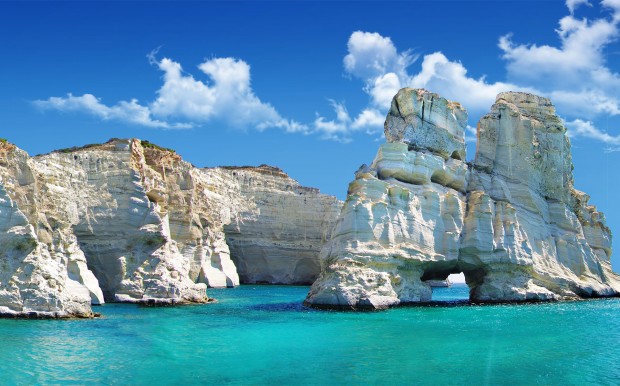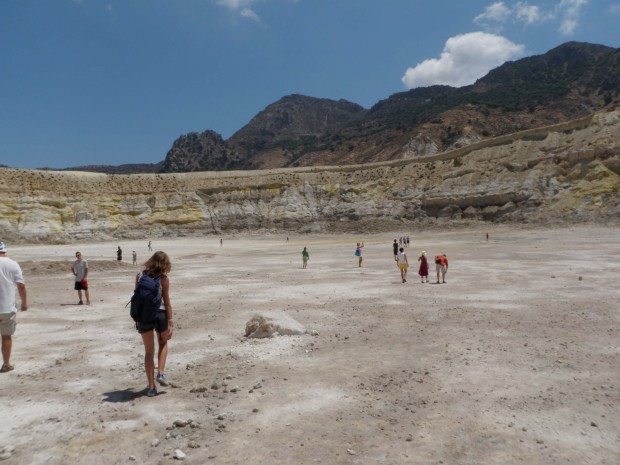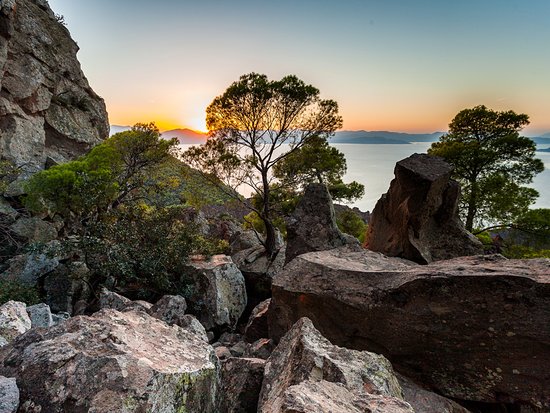|
Greece has one of the most well-known volcanic arcs worldwide, which was created millions of years ago by the sinking of the African lithosphere under the Eurasiatic plate. This volcanic arc with its especially intense volcanic activity in the past created the volcanic landscapes that we come across in many regions and islands throughout Greece. The most important volcanoes in Greece are situated on the island of Santorini, on Nisyros and Milos island and in Methana. The volcano of Santorini The volcano of Santorini is the most famous volcano in Greece. The island of Santorini is gifted with a wild beauty created by the eruptions that happened between 1613-1614 BC. The Santorini eruption of 1,600 BC was one of the largest volcanic events on Earth. The settlement at Akrotiri was completely destroyed. The eruption also damaged the ancient Minoan civilization that flourished on the island of Crete located to the south of Santorini. More likely the earthquake caused a huge tsunami which impacted the seashore cities of Minoans. The eruption seems to have inspired certain Greek myths and it is the source of the legend of the lost Atlantis. The area has been calm since 1950, when the last lava outflow was recorded, with the hot springs bubbling up from the sea and the vapors around Nea Kameni being the only evidence of activity. The volcano has the largest caldera (crater) in the world with a height of 300 m and a diameter of 11 km. The amazing thing about this caldera is that it is filled with sea water. On the cliffs of the caldera, white houses have been built offering breathtaking views. Boat tours depart to the volcano, which actually constitutes the island of Nea Kameni.
The volcano of Milos Milos is a volcanic Greek island in the Aegean Sea, popular for its amazing variety of natural mineral deposits (silver, perlite, bentonite) and beautiful beaches ideal for swimming and discovering the island’s volcanic nature. The volcano of Milos is considered dormant. It is located in the centre of the island and has given to Milos a richness of minerals and a unique geological formation. The last volcanic eruption on Milos took place in 90,000 BC.
The volcano of Nisyros The entire island of Nisyros is in fact a volcano. Nisyros is the youngest of the large volcanic centres in Greece and it is only 160,000 years old. The eruption which took place in 1872 created a crater of about 6-7 m and another eruption in 1888 ended up forming a crater of 25 m in diameter. The eruptions also ended up leaving behind a moonspace landscape with gorgeous craters and some very active fumaroles. In 1956, schisms emitting smoke were observed. Nowadays, the volcano of Nisyros is dormant. The largest crater is Agios Stefanos with a diameter and depth of 30m.
The volcano of Methana Methana isn’t an island but a peninsula on the Peloponnese, which is situated approximately 50 km southwest of Athens.The Methana volcano is one of the 32 volcanoes that are situated on the Methana peninsula. The volcanic activity started about one million years ago and in fact a large eruption took place in 230 BC. The last eruption of the Methana volcano happened in 1700. The volcano has created a stunning landscape with rich flora and fauna.Today the volcano is dormant and many hiking and climbing tours are organized in the peninsula. Due to the volcanic activity, Methana also has famous thermal springs.
The volcano of Samothraki
Samothraki is a small island 24 nautical miles away from Alexandroupoli and it is known for its wild natural beauty. The rocky and steep slopes of the majestic mountain of Saos, which was once an active volcano, create canyons and cliffs with numerous springs and waterfalls. As Homer mentions, this mountain is the place where Poseidon, god of the sea, sat and watched the Trojan war. It is rare to find any other Greek island which combines so many water springs, desert shores with cliffs, sea caves, waterfalls and dramatic volcanic scenery at the same time. Other smaller volcanoes in Greece are found on Kos island and on the islet of Gyali, which is located between Kos and Nisyros, on Chios island, on Limnos, known as the volcanic island of Hephaestus, on Skyros, on North Evia, in Edessa, in Thiva and in Thrace (region Ferron-Sappon, near Alexandroupoli).
|
|
| Maria Kitsati, contribution to Chain’s e-book, project: “In Search of the Occident: the Azores”, 24 – 29/7/ 2017 |











